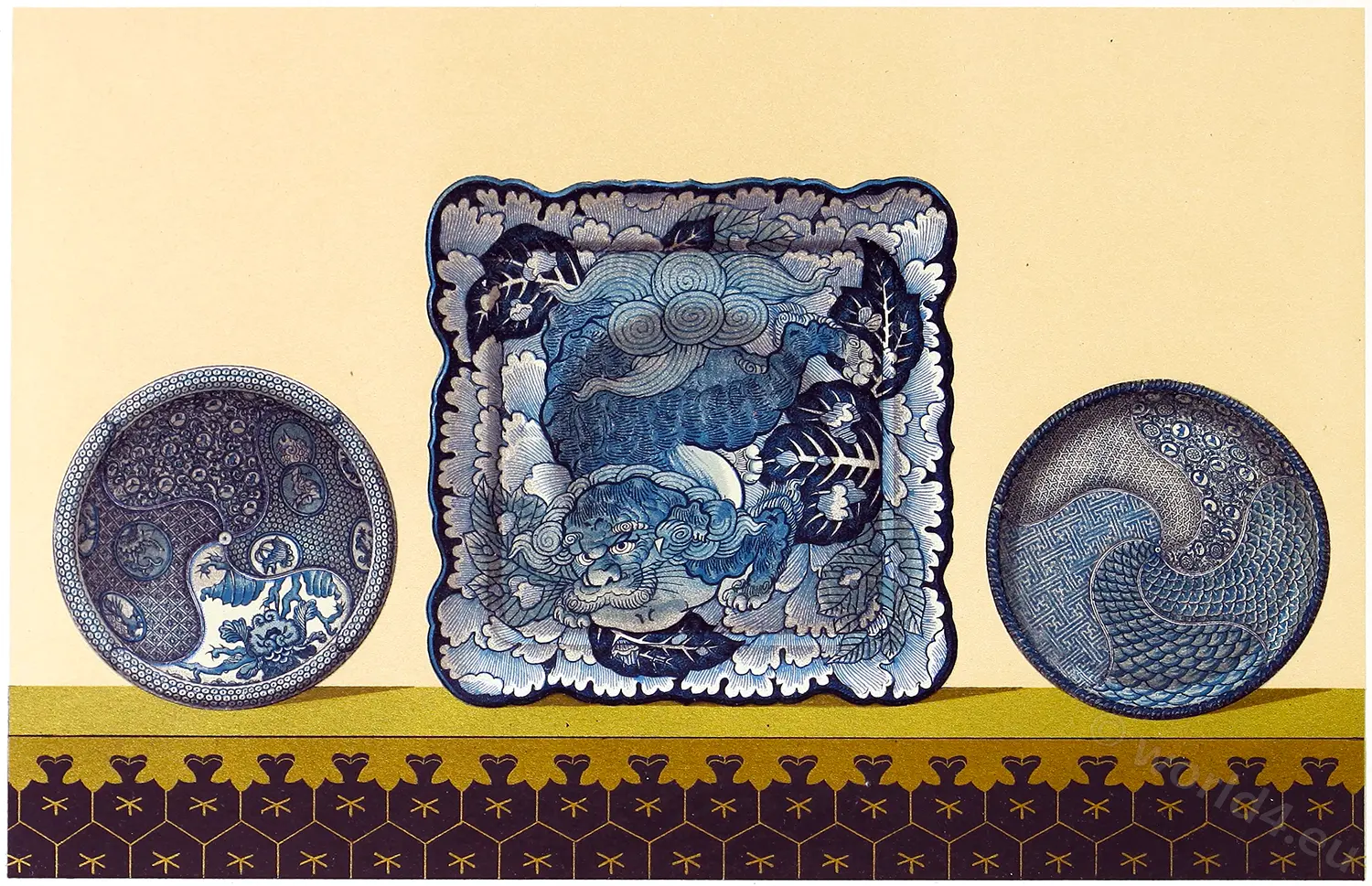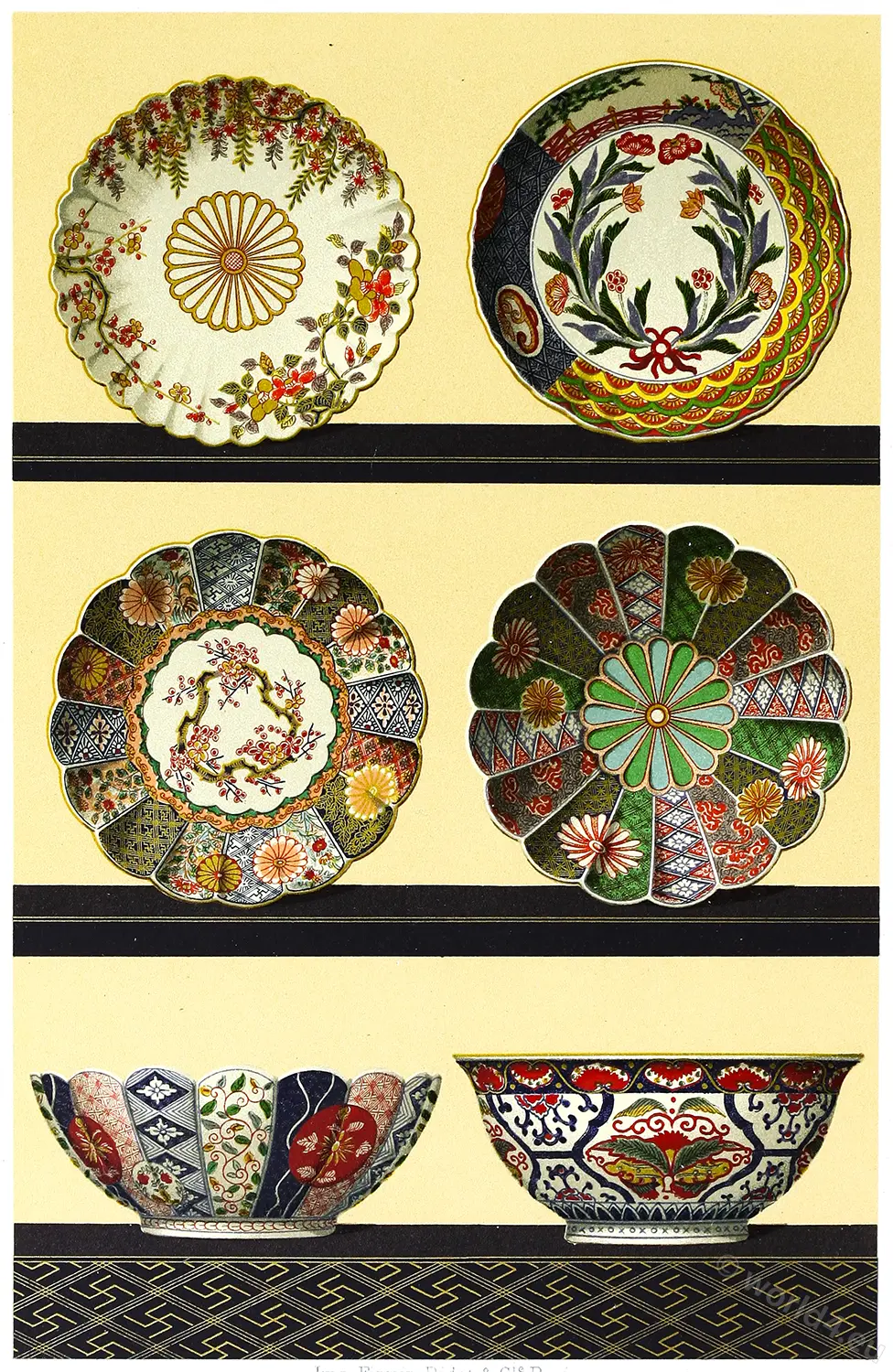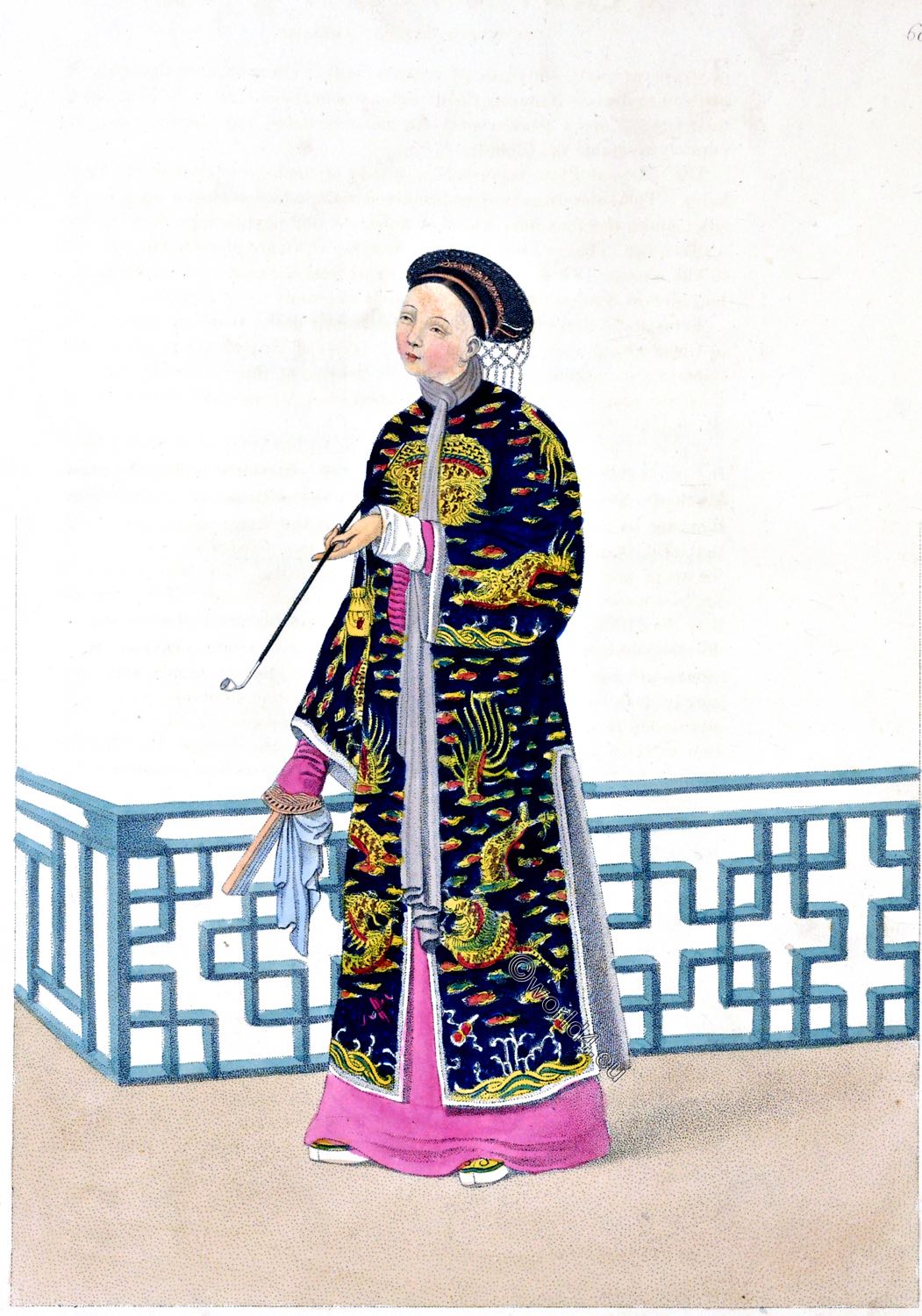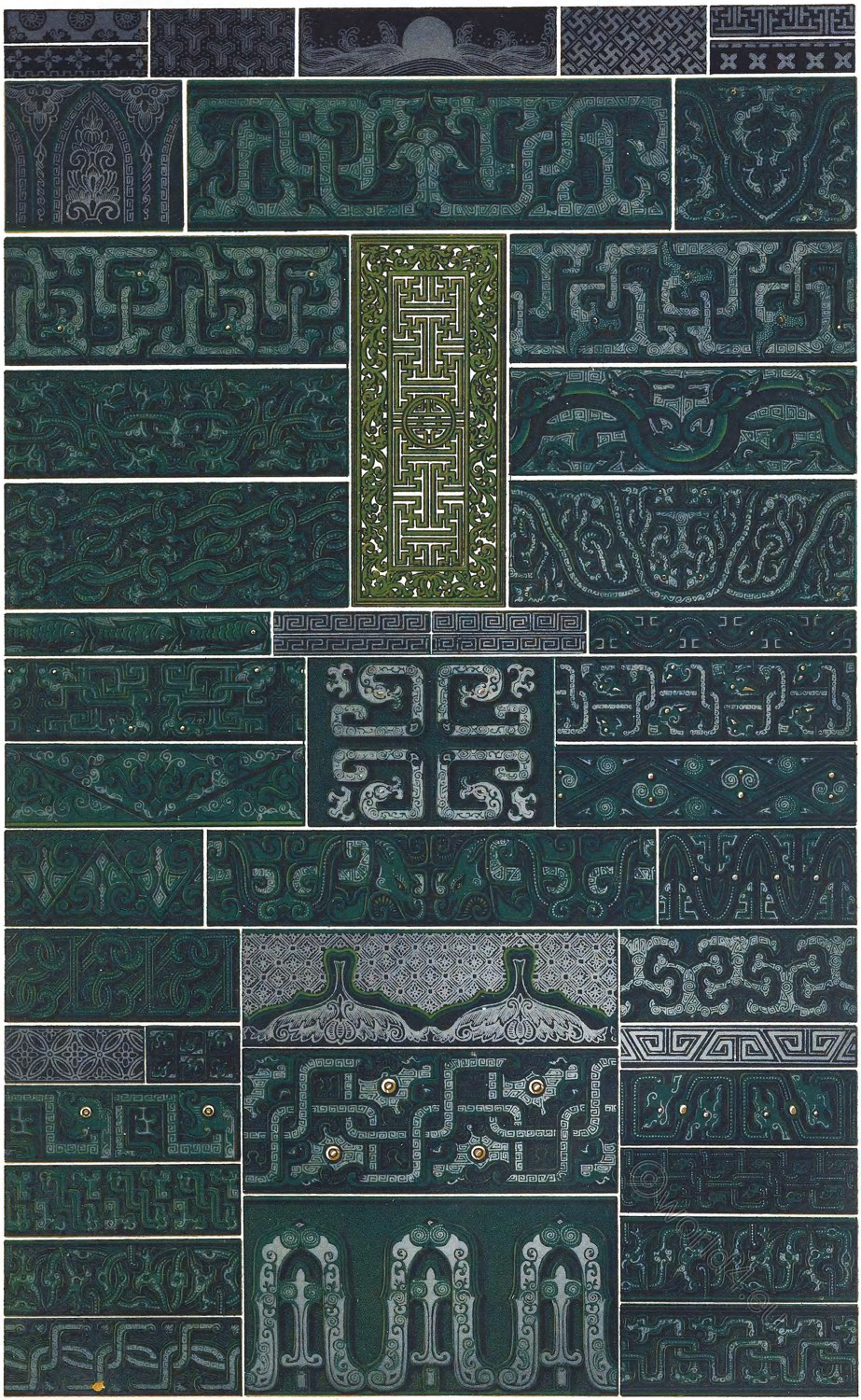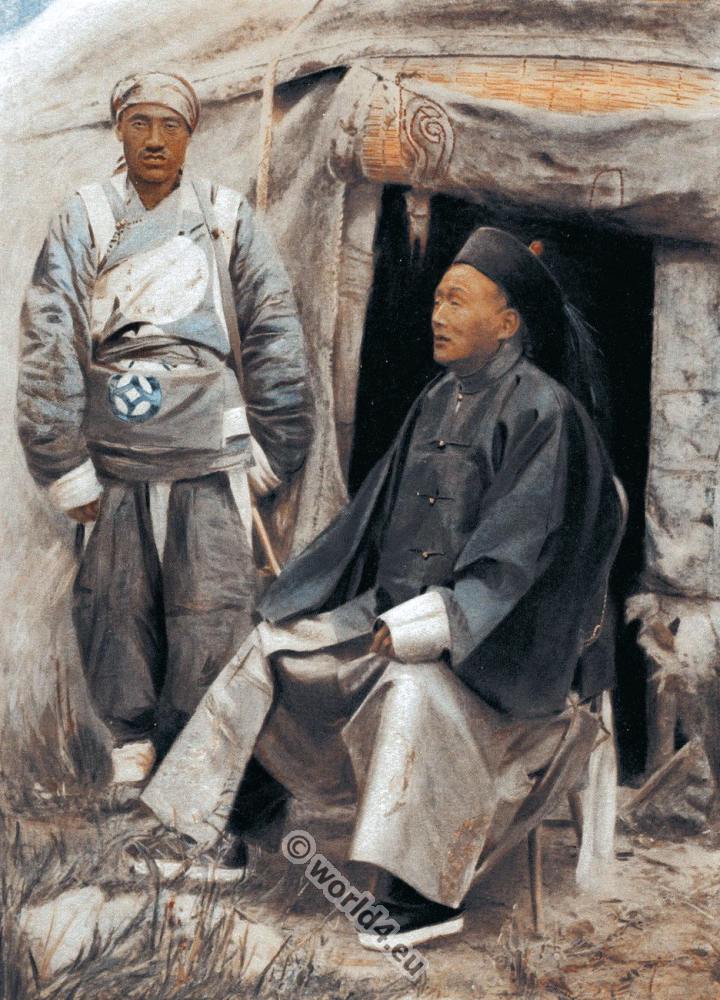Plate 11.
Chinese. Painting.
Ornamentation in Chinese porcelain painting.
In very early times the Chinese had already attained a high degree of perfection in the art of decoration. But they did not go beyond that point, and for many centuries their system of ornamentation shows no progress at all, without mentioning that their modern productions are mere imitations of ancient subjects, often calculated to deceive.
Most remarkable however are their painted porcelain vases. They are generally bounded with borders, among which the meander pattern in various forms predominates. Fig. 9, 10, 11, and the upper part of Fig. 4 represent some of the few conventionally treated examples of such borders. On the faces of these vases we find geometrical patterns, as well as flowers, fruit and every kind of plants, some of them gracefully idealising the forms of nature, others, copying them with anxious minuteness. All these ornaments cover the vases either in continuity, or, more frequently, they are irregularly and capriciously scattered over them, sometimes still enlivened by human figures and animals. The principal native plants used for decorative patterns are the leaves and flowers of the tea-shrub, roses, camellias, melons, etc.
Finally the whole receives a splendid impression from the peculiar brilliancy of the Chinese porcelain enamel, the colour of which is not a pure white, as in our representation, but always somewhat greenish.
Fig. 1 — 5 and 9 — 13 borders; Fig. 6 — 8 continuous patterns of painted China vases, the greater part of which are to be found in the Victoria and Albert Museum, London. In Fig. I an inclination towards Persian manner is to be observed in composition and character. The yellow colour, used in Fig. 4, 6 and 10, is gold on the original objects.
Source: Ornamental treasures: a collection of designs from India, China, Japan, Italy, Germany, France. etc., of all styles and times, by H. Dolmetsch. New York: R. Davis, 1912.
Discover more from World4 Costume Culture History
Subscribe to get the latest posts sent to your email.



